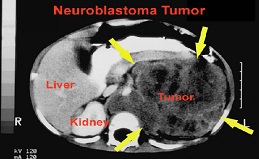
Hiroyuki Shimada
University of Southern California Keck USA
Title: Neuroblastoma Pathology; An Update
Biography
Biography: Hiroyuki Shimada
Abstract
“Neuroblastoma” is often used as an omnibus term for all types of peripheral neuroblastic tumors including neuroblastoma, ganglioneuroblastoma, and ganglioneuroma. Tumors in this group are biologically diverse: molecular/genomic properties of individual cases are closely related to their unique clinical behaviors. Biologically favorable tumors have a potential of spontaneous regression or tumor maturation, and are often associated with a hyperdiploid pattern (whole chromosomal gains without structural abnormalities). While biologically unfavorable tumors, characterized by a diploid pattern, segmental chromosomal alterations, and/or gene amplification/rearrangements/mutations, are often refractory to therapy.

For neuroblastoma clinical trials, the Children’s Oncology Group utilizes their risk-grouping system for patient stratification and protocol assignment based on the combination of clinical stage, age at diagnosis, International Neuroblastoma Pathology Classification, MYCN status, DNA index, and segmental chromosomal aberrations. Estimated survival rate for the non-High-Risk patients is ~90% with surgery alone (Low Risk) or with biopsy/surgery and moderate chemotherapy (Intermediate Risk). In contrast, estimated survival rate for the High-Risk patients remains as low as 45~50% even after intensive treatment followed by stem-cell transplantation.
Continuous efforts are being made for discovery of actionable/druggable targets in High-Risk neuroblastomas. Those potential targets include (1) ALK activating mutation/amplification (dysregulating cell signaling and leading to uncontrolled proliferation of neuroblasts); (2) TERT rearrangement and ATRX/DAXX mutation (preventing neuroblasts from telomere-mediated senescence); and (3) MYC family protein overexpression – a new concept of highly aggressive “MYC family-driven neuroblastomas” with augmented expression of MYCN or MYC protein, also morphologically characterized by nucleolar hypertrophy (promoting MYC/MAX heterodimer formation for activating down-stream gene targets).

